Motorcycle helmets are an important piece of gear for any rider. They protect your head in the event of a crash, and they can also keep you warm and dry on long rides. But like any other piece of equipment, motorcycle helmets need to be cleaned occasionally to keep them in good condition. In this article, we will discuss how to clean a motorcycle helmet safely and effectively. We’ll cover everything from the basics steps to more advanced methods, so you can choose the approach that works best for you!
Table of Contents
Motorcycle Helmet Parts
Motorcycle Helmet is a type of protective gear worn to prevent or minimize head injuries in an accident.
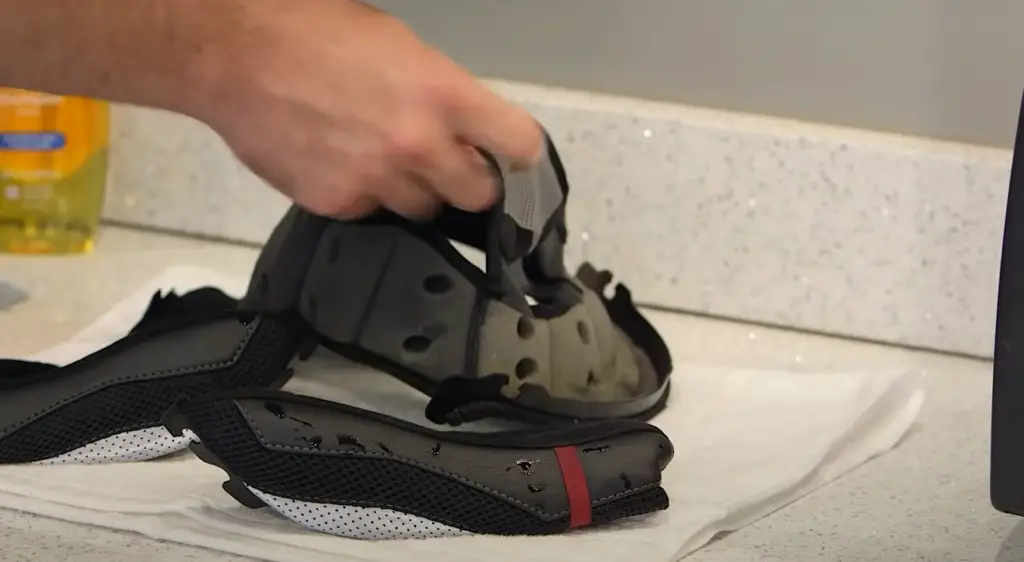
It consists of a liner, visor and shell.
Helmet Visor
The visor protects the rider’s eyes from wind, dust, rain, and insects. It is usually made of polycarbonate or acrylic and is attached to the helmet with screws or snaps. [2]
Helmet Shell
The shell is the outermost layer of the motorcycle helmet which protects the EPS foam liner from damage due to UV rays, abrasion, etc. It is usually made of fiberglass, Kevlar or carbon fiber composite.
Inner Pads/Liner
The liner is the innermost layer of the helmet which comes in direct contact with the head. It is usually made of EPS (Expanded Polystyrene) foam which absorbs impact energy during a crash.
How To Clean a Motorcycle Helmet
Preparation
As a rule of thumb, you should never use any cleaning materials on your helmet that you wouldn’t use on your own head. That means no harsh chemicals, solvents or abrasives. So what can you use? We recommend a baby shampoo and warm water solution. You can also use a dedicated motorcycle helmet cleaner if you prefer. Avoid using cleaners that contain waxes or silicones as they can damage the helmet’s surface and affect the clarity of the visor. Once you’ve got your cleaning solution sorted, you need to gather together a few other items to make sure the job is done properly. You’ll need:
- A soft cloth for wiping down the outside of the helmet
- A microfiber cloth or sponge for cleaning the visor
- An old toothbrush (or similar) for getting into all the nooks and crannies
Cleaning Tools and Materials
Toothbrush
Toothbrush is an important tool while cleaning a motorcycle helmet. It helps to remove the dirt and debris from the surface of the helmet. You can use a soft-bristled toothbrush or an old toothbrush to scrub the helmet.
Microfiber Cloth
Microfiber cloths are great for cleaning motorcycle helmets because they are gentle and effective.
Baby Shampoo
Baby shampoo is the best way to clean the helmet’s visor without scratching it.
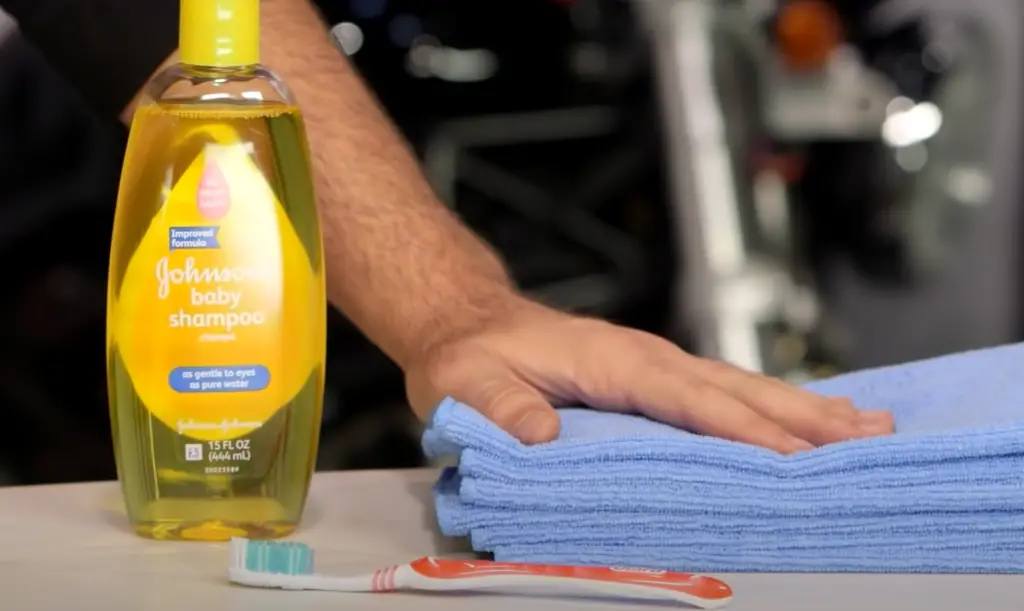
The one thing you need to keep in mind is that you should avoid using shampoo that contains conditioner because it can make the visor foggy.
Warm Water
There is no difference between cleaning your helmet with cold or warm water. However, if you are using any kind of cleaner that requires being mixed with water, make sure to use warm water. This will help the ingredients mix together better and clean your helmet more effectively.
Compressed Air
Air compressor is the best and easiest way to remove dirt, dust, and debris from your motorcycle helmet. Don’t use air from aerosol canisters as they aren’t strong enough and might end up freezing your helmet’s liner. You can get a small air compressor from any hardware store for less than $100. [1]
Attach the air blower nozzle to the exhaust vent of your motorcycle helmet. Turn on the compressor and hold the nozzle about six inches away from the helmet. Move it around so that you cover all areas of the helmet. If you see any stubborn dirt, use a soft brush attachment to remove it.
Cleaning Guide
Exterior Cleaning
To get started, you’ll need to gather a few supplies. You’ll need baby shampoo, a soft cloth, and some warm water. Avoid using hot water, as it can damage the helmet’s finish.
Start by wetting the helmet with warm water. Apply a small amount of shampoo to the cloth and begin gently washing the helmet. Be sure to pay extra attention to any areas that are especially dirty or stained. Once you’ve finished washing the helmet, rinse it thoroughly with cool water to remove all traces of shampoo.
Next, use the soft cloth to dry the helmet. Avoid using any harsh chemicals or abrasive cleaners, as they can damage the helmet’s finish. If you need to remove stubborn dirt or stains, you can try using a mild automotive cleaner.
The Delicate Visor
The face shield or visor on your helmet is the most delicate part.
The best way to clean the visor is with a microfiber cloth and a little bit of water.Start by wetting the microfiber cloth with water and then gently wiping down the surface of the visor. If there are any stubborn dirt or grime marks, you can use a mild soap solution to help remove them. Once you’ve wiped down the entire surface, rinse off the soap solution with clean water and dry the visor with a clean microfiber cloth.
It’s important to note that you should never use any kind of chemicals or solvents on the visor as this can damage the surface. If you need to remove any stickers or decals, make sure you use a heat gun or hair dryer to loosen the adhesive before carefully peeling them off.
Interior Rejuvenation
Once you’ve given your helmet’s exterior a good cleaning, it’s time to move on to the interior.
The first step is to remove the padding and liners from your helmet. These can usually be pulled out by hand, but if they’re being stubborn, you can use a flathead screwdriver to loosen them.
Once the padding and liners are out, give them a good wash in soapy water. You can let them air dry or put them in the dryer on low heat.
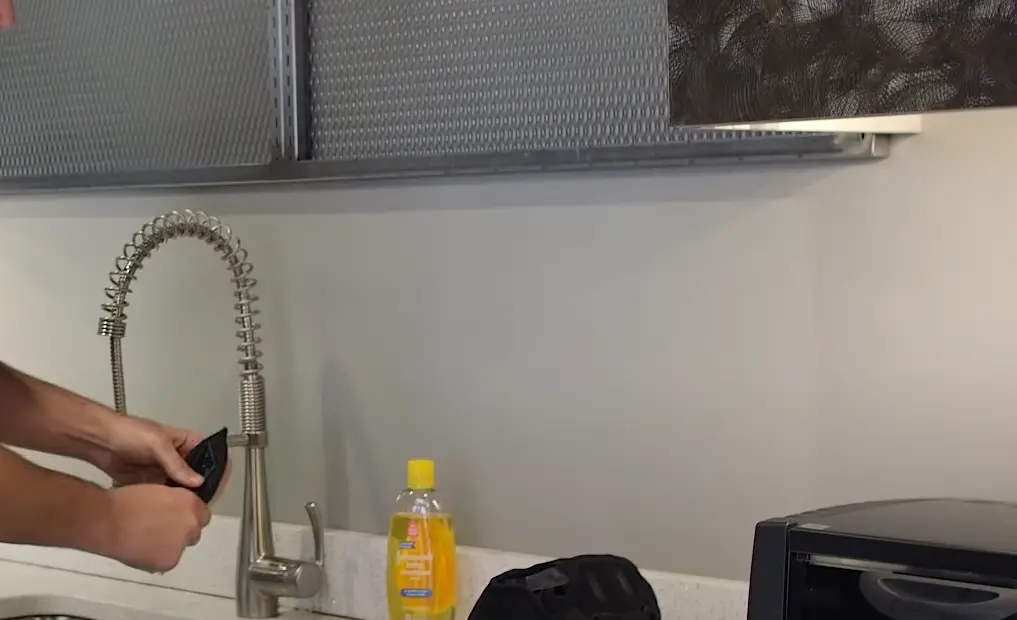
While the padding and liners are drying, you can move on to cleaning the inside of your helmet shell.
The best way to do this is with a damp cloth and some mild soap. Be sure to avoid using any harsh chemicals or cleaners, as they can damage the finish of your helmet.
Once you’ve wiped down the inside of your helmet, give it a good once-over with a dry cloth to remove any leftover moisture.
Now that the interior of your helmet is clean and refreshed, you can put the padding and liners back in place.
And that’s it! You’re now ready to hit the road with a clean and fresh motorcycle helmet.
How To Clean Helmet Visor Scratches
Toothpaste Therapy
One of the most popular methods for cleaning a helmet visor scratches is using toothpaste. This is because toothpaste contains a mild abrasive that can help to remove the top layer of the scratch, making it less visible. [3]
To use this method, simply apply a small amount of toothpaste to a soft cloth and rub it into the scratch in a circular motion. Once you have gone over the entire scratch, rinse the area with clean water and dry it off. You may need to repeat this process a few times before the scratch is completely removed.
If you are using toothpaste to remove scratches from your motorcycle helmet visor, be sure to use a non-abrasive variety such as Colgate Total® Advanced Deep Clean Toothpaste. You should also avoid using toothpaste that contains whiteners as these can further damage the visor.
Once you have removed the scratches from your motorcycle helmet visor, it is important to protect it from future damage. One way to do this is by applying a clear coat of automotive paint or polymer sealant. This will create a barrier between the visor and the environment, helping to prevent scratches, fingerprints and other marks.
Applying a clear coat is relatively simple: just follow instructions on the product you are using. Once it is dry, your motorcycle helmet visor will be protected from future damage. If you do not want to apply a clear coat, you can also use a polish or wax designed for motorcycle helmets. This will provide some protection, but it will not be as durable as a clear coat.
Sandpaper Technique
To clean your helmet visor scratches, you will need a few supplies. Here is a list of what you’ll need:
- sandpaper (600 grit or higher)
- water
- soap
- microfiber cloths
Start by pouring some water onto the sandpaper and then begin rubbing the wet paper on the surface of the visor in a circular motion. Be sure to keep the paper wet or it will start to damage the helmet.
After a few minutes, check your progress. If the scratches are still visible, continue sanding. If they are beginning to fade, you can move on to the next step.
Once all of the scratches have been removed, wash the visor with soap and water. Be sure to rinse it well so that no soap residue is left behind.
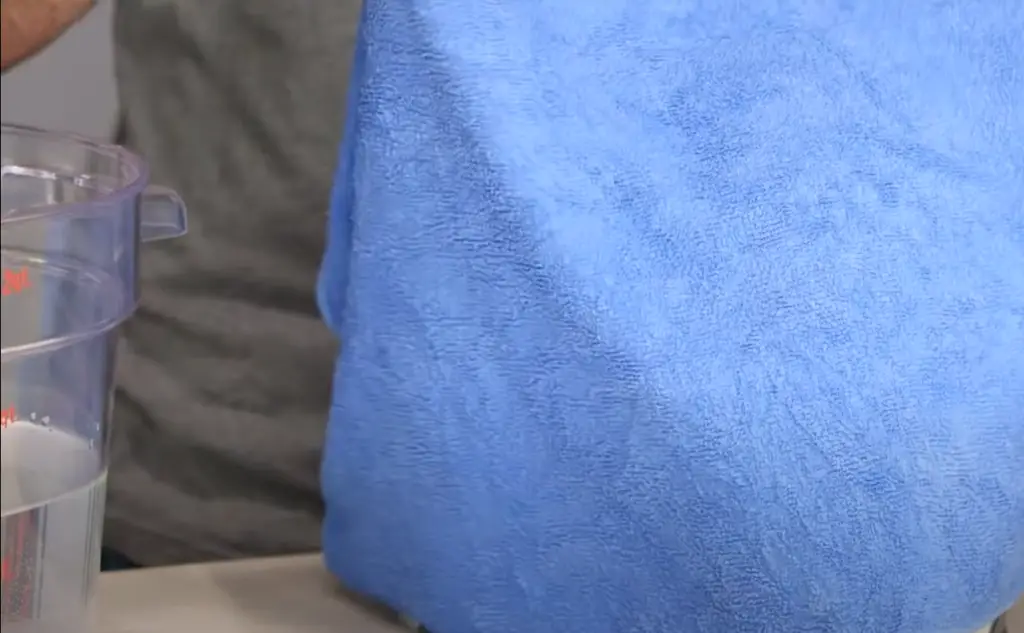
Finally, use a microfiber cloth to dry the visor and your helmet is good as new!
Scratch Removal Wax
If your helmet visor has scratches, you can try using scratch removal wax. Removal wax is designed to fill in small scratches. This type of wax can be found at most auto stores. Apply a small amount of the wax to a clean, soft cloth and rub it into the scratch in a circular motion. Once you’ve applied the wax, use a clean cloth to buff it out. You may need to repeat this process a few times to completely remove the scratch.
These kits can be found at most hardware stores and include everything you need to remove scratches from your helmet visor.Another option for scratch removal is to take your helmet to a professional detailer or optician. They will be able to remove the scratches using a machine that polishes the helmet visor. This is usually a very expensive option, so it’s best to try one of the other methods first.
How To Avoid Scratches
The number one rule for avoiding scratches on your helmet visor is to never use any kind of chemical cleaner or abrasive material. This includes things like Windex, paper towels, and even some brands of microfiber cloths. Instead, opt for a mild soap and water solution applied with a soft, clean cloth. You can also use a dedicated visor cleaning product designed specifically for this purpose.
This includes tables, countertops, and even the ground. To store your helmet when you’re not wearing it, invest in a soft helmet bag or keep it on a shelf or in another safe place where it won’t be subject to scratches. [4]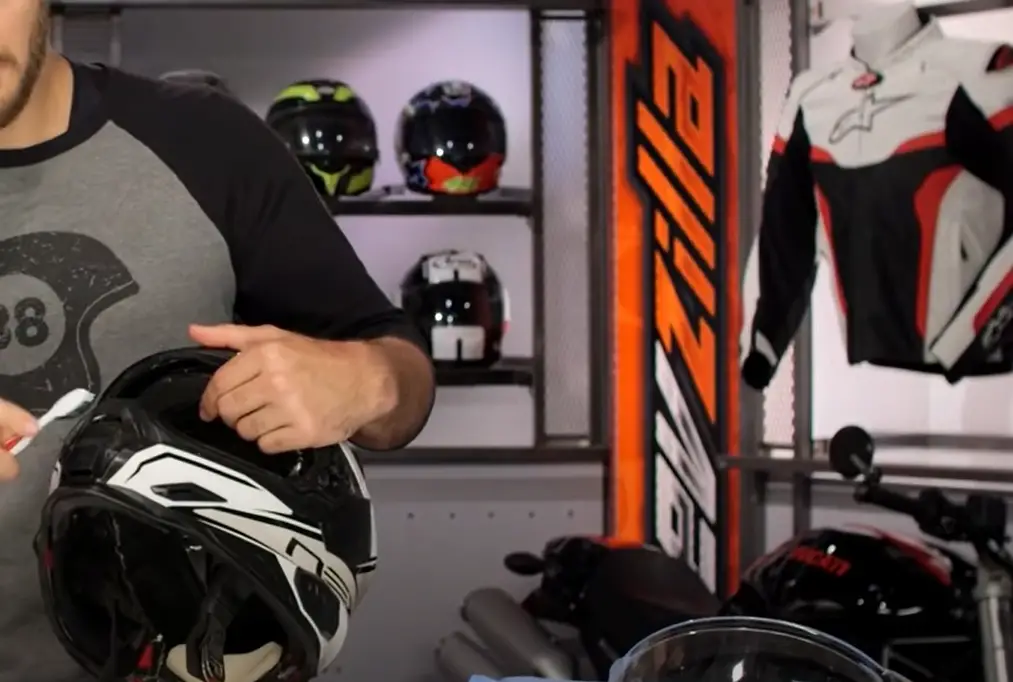
By following these two simple rules, you can keep your helmet visor looking like new for years to come.
FAQ
Can I put a helmet in a washing machine?
The quick answer is no, you cannot put a motorcycle helmet in a washing machine. The heat and agitation from the washing cycle can damage the helmet’s liner and ruin its safety features.
Can you wash the inside of a motorcycle helmet?
Yes, you can wash the inside of a motorcycle helmet. However, you need to be careful not to damage the helmet’s padding or inner liner. The best way to clean the inside of a motorcycle helmet is to remove the padding and inner liner and wash them separately in mild soap and water. Allow the padding and inner liner to air dry completely before putting them back in the helmet.
Can I use Windex on my motorcycle helmet visor?
The short answer is yes, you can use Windex on your motorcycle helmet visor. However, we do not recommend using Windex or any other glass cleaner on your motorcycle helmet visor on a regular basis. The chemicals in Windex can damage the coatings that are applied to motorcycle helmet visors to protect them from scratches and UV rays. If you do use Windex on your motorcycle helmet visor, be sure to rinse it off with clean water as soon as possible.
How do you clean a smelly bike helmet?
There are a few things you can do to get rid of that nasty smell in your helmet. First, try airing it out. Take the helmet off and set it in a well-ventilated area for a few hours. If that doesn’t work, try using a mild soap and water solution to clean the inside of the helmet. Be sure to rinse the helmet thoroughly afterwards. If the smell persists, you may need to replace your helmet.
How do you dry a wet helmet?
The safest and most effective way to dry a wet helmet is to use a clean, absorbent towel. Gently pat the helmet until it is no longer wet. If you have an air compressor, you can use it to blow the inside of the helmet dry. Do not use a hair dryer as this can damage the helmet’s liner. If the helmet is extremely wet, you can place it in a cool oven (200 degrees or lower) for a short time to help speed up the drying process.
How do you clean a non removable helmet liner?
To clean a non removable helmet liner, you will need to remove the helmet from your head. Once the helmet is off, you can gently hand wash the liner with mild soap and warm water. Be sure to rinse the liner thoroughly before putting the helmet back on. If your helmet has a visor, you can clean it with a mild glass cleaner and a soft cloth.
How do you remove scratches from helmet visors at home?
There are a few ways that you can remove scratches from helmet visors at home. One way is to use a mild abrasive, such as toothpaste or baking soda. Another way is to use a polishing compound specifically designed for plastics.
To remove scratches from your helmet visor using an abrasive, start by cleaning the area around the scratch with a soft cloth. Next, apply a small amount of toothpaste or baking soda to a clean, soft cloth. Rub the cloth over the scratch in a circular motion until you see the scratch start to disappear.
If you’re using a polishing compound, follow the instructions on the packaging. In general, you’ll want to apply the compound to a clean, soft cloth and then rub it over the scratch in a circular motion.
How do you protect your helmet visor from scratch?
One way to protect your helmet visor from scratch is to use a clear silicone adhesive. You can apply the silicone adhesive around the entire circumference of the visor. This will create a barrier between the visor and anything that could potentially scratch it.
Another way to protect your visor from scratches is to keep it clean. When you clean your helmet, be sure to use a soft cloth or sponge and avoid using any harsh chemicals or abrasives. If you do get scratches on your visor, you can try buffing them out with a polishing compound.
Useful Video: How To Clean & Maintain Your Motorcycle Helmet at RevZilla.com
Conclusions
So, there you have it. Our complete guide to cleaning your motorcycle helmet. We hope you found it helpful and that you now feel confident enough to tackle the job yourself.
Thank you for reading!
References:
- https://www.revzilla.com/common-tread/how-to-clean-a-motorcycle-helmet
- https://www.motocard.com/en/blog/shopping-guides/helmets/motorcycle-helmet-parts-all-the-details/##scroll
- https://revzly.com/how-to-clean-helmet-visor-scratches/
- https://motorbikewriter.com/protect-clean-visor/

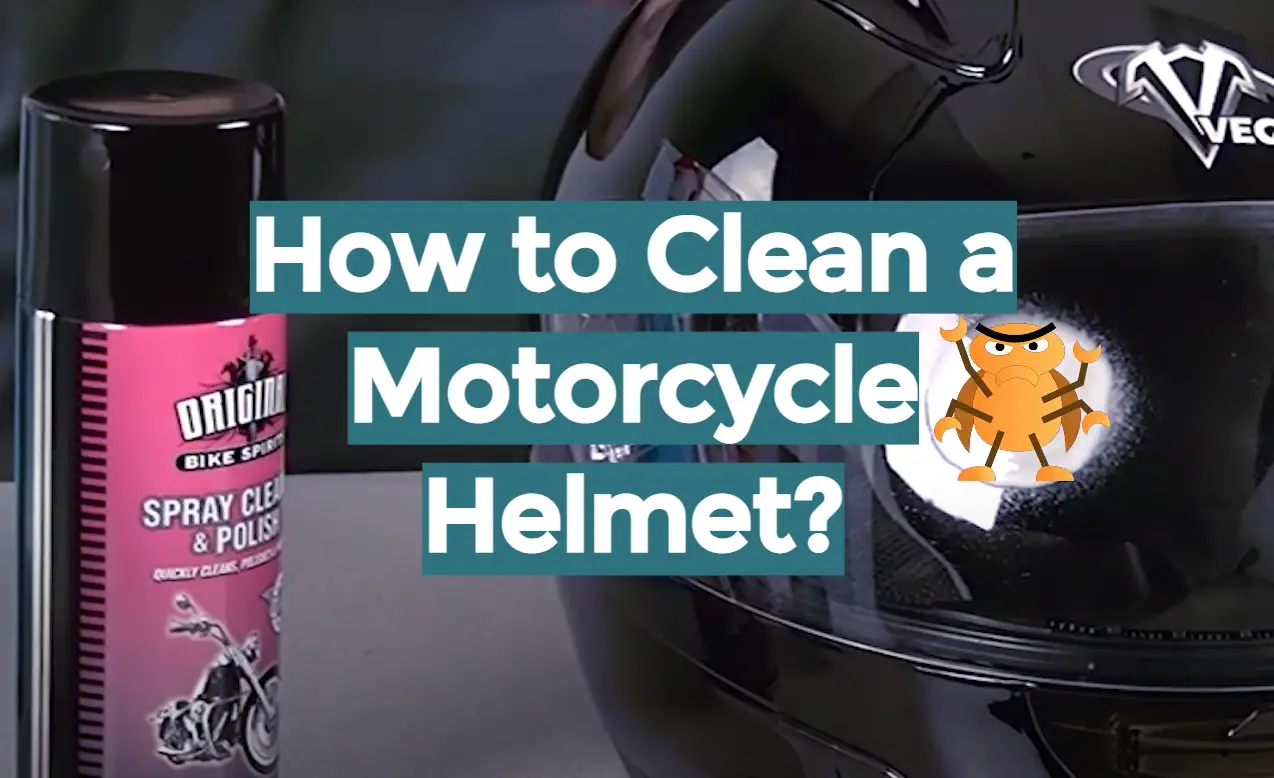

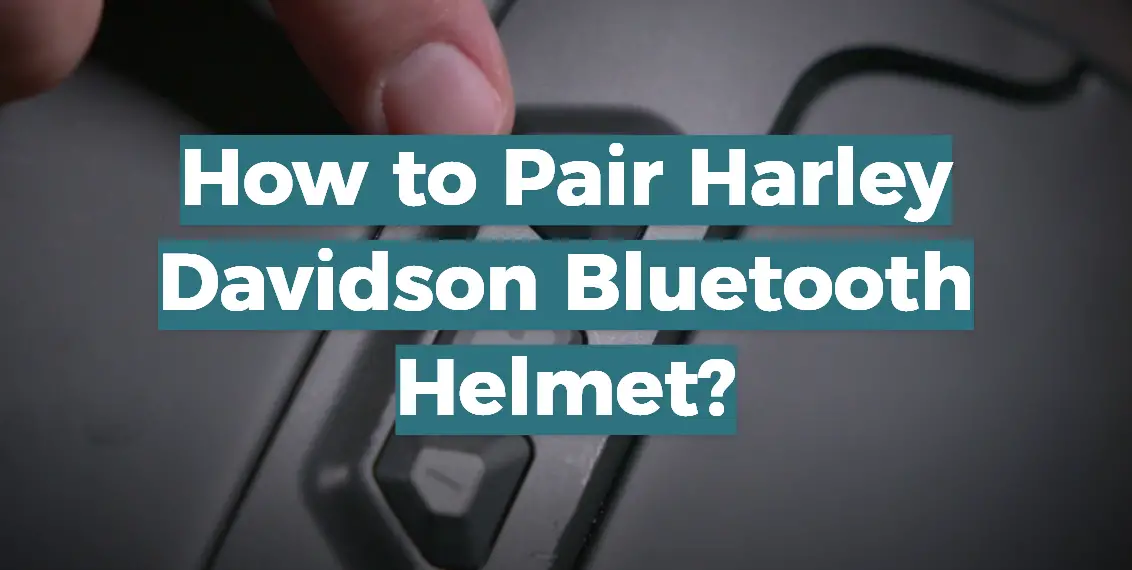
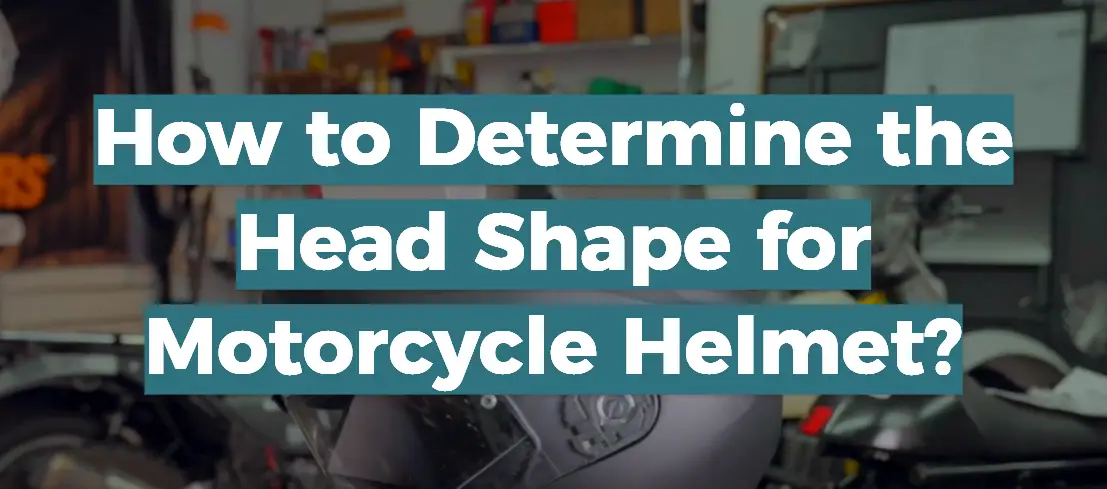

Leave a Reply